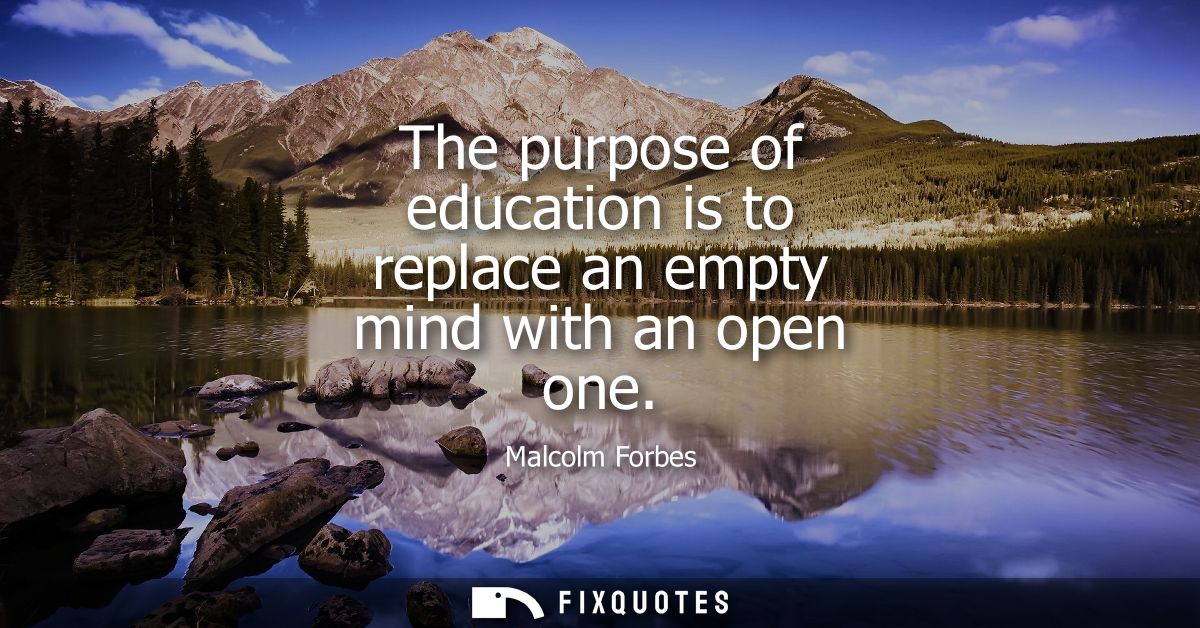"The purpose of education is to replace an empty mind with an open one"
About this Quote
Malcolm Forbes emphasizes the essential transformative power of education by contrasting two very different states of mind: emptiness and openness. An empty mind implies a lack of information, curiosity, critical thinking, or awareness, a void waiting to be filled. Rather than merely providing facts or memorized data, the true objective of education is to move beyond simple intellectual vacancy. The real value lies in what education nurtures: a mind that is receptive to new ideas, able to question its own assumptions, and genuinely curious about the world.
An open mind is not simply full of information but is characterized by the ability and willingness to entertain multiple perspectives. It does not cling rigidly to one’s own limited experiences or beliefs but seeks to understand and appreciate the complexities of different viewpoints, cultures, and disciplines. Education, in this sense, is not the passive deposit of knowledge but an active process of expanding one’s awareness and potential. It is about teaching individuals how to think rather than what to think.
Forbes’s perspective suggests that the mark of a well-educated individual is not someone who has memorized a vast array of facts, but someone who approaches life with humility, curiosity, and a profound respect for learning and growth. Openness fosters innovation, empathy, and resilience. In a world increasingly shaped by rapid change, dogmatism, and polarized views, the call for open-mindedness is more important than ever.
True education challenges prejudices, broadens horizons, and cultivates the adaptive mindset needed for both personal and societal progress. Forbes’s statement encourages us to value lifelong learning, critical reflection, and the courage to question not only the world but also ourselves. The purpose, then, is not just to fill minds but to unlock them, to create thinkers, seekers, and creators who are ever-ready to engage meaningfully with complexity and diversity.
More details
About the Author

